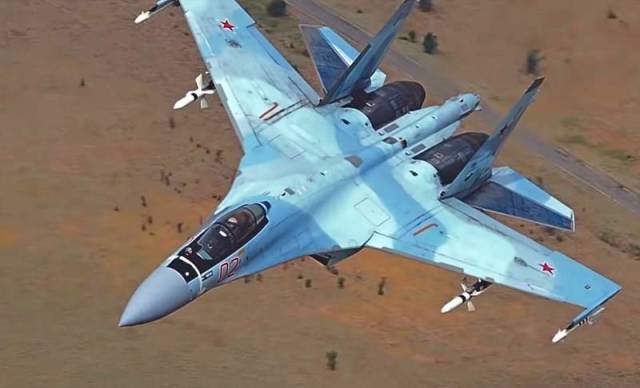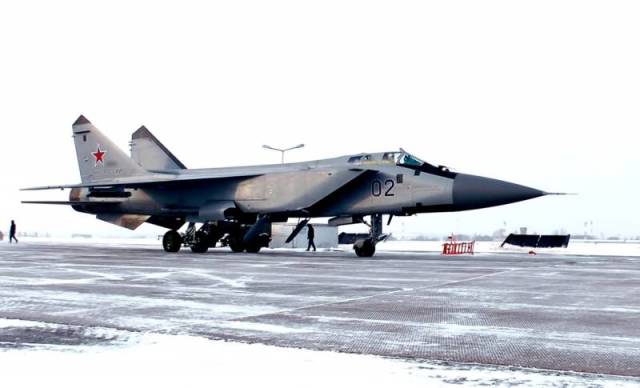 Multi-purpose fighter of the 4++ generation Su-35S
Multi-purpose fighter of the 4++ generation Su-35SAfter the start of the special operation in Ukraine in the West, especially among NATO countries, there was a reasonable increase in interest in studying and analyzing the capabilities of Russian military equipment and weapons. The aircraft of the Russian Aerospace Forces, which show high efficiency both in hitting ground targets in the frontline zone and in the enemy's rear, and in aerial battles, were not left without attention.
Experts of the American military-analytical publication Military Watch conducted their own, it is worth noting, very objective, comparative analysis of two fighters of the Russian Aerospace Forces on technical characteristics and capabilities of air combat. We are talking about a two-seat supersonic high-altitude long-range interceptor MiG-31BM and a multi-purpose supermaneuverable fighter with a controlled thrust vector of generation 4++ Su-35S.
The MiG-31 entered service with the Soviet Air Force in 1981 and was a pioneer of many advanced technologies. The Foxhound, as this MiG is called in NATO countries, is considered the most combat-ready aircraft in service with any air force during the Cold War era in terms of air combat capabilities, and is the heaviest and fastest fighter-interceptor in the modern world.
 MiG-31BM interceptor fighter
MiG-31BM interceptor fighterThe Su-27 entered service in 1985, and unlike the more expensive MiG-31 was widely exported after the collapse of the Soviet Union, which led to significant investments in the modernization of the design. The Su-35, developed on the basis of the Su-27M, became the world's first 4++ generation fighter and entered service with the Russian Air Force in 2014. The aircraft was designed to counter the fifth-generation fighters of the US Air Force, such as the F-22 and F-35, and upon entry into service was considered the most combat-ready serial fighter in the world.
Before the Su-57 entered service in December 2020, the Su-35 and MiG-31BM were the leading contenders for the title of the most combat-ready Russian fighter-interceptor in air combat. The main advantage of the Su-27/35 series is its continuous production, which made it possible to constantly upgrade the airframe and engines.
To conduct a direct comparison of two combat vehicles in terms of air combat capabilities is not entirely correct. The MiG-31BM is designed as a specialized high-altitude interceptor, and therefore it is much faster, able to use its weapons at much higher altitudes and has unsurpassed combat range capabilities. The Su-35 has a much higher rate of climb, excellent thrust-to-weight ratio and maneuverability, which provides an overwhelming advantage at short distances. The maintenance requirements and operating costs of this aircraft are also significantly lower.
The MiG-31 is better suited for long-range combat, especially since the R-37M air-to-air missiles are used as the main armament, which are among the longest-range in the world. They can cover a distance of 400 km, are armed with 60-kilogram combat units and develop an unsurpassed speed of Mach 6. The MiG-31 is also well suited for intercepting cruise missiles due to the uniquely high situational awareness provided by its large-sized Zaslon-M airborne radar. These capabilities make the MiG-31 an excellent addition to Russia's ground-based air defense to protect the country's vast airspace.
The Su-35 mainly uses the R-37M and R-77-1 missiles, which have a relatively modest range of 130 km and 110 km, respectively. This disadvantage was partially eliminated with the integration of the P-37M, capable of hitting targets at a distance of more than 300 km.
A significant advantage of the MiG-31 over the Su-35 still lies in the fact that its capabilities have not been thoroughly studied by Russia's opponents, American experts say. After the collapse of the USSR, the United States managed to acquire two Flanker-type aircraft in Belarus and carefully studied them. The capabilities of the MiG-31, on the contrary, are not very well known, since the aircraft has never been exported.
Ultimately, the MiG-31 is a more versatile aircraft, especially because it can be equipped with ballistic missiles and anti-satellite weapons, providing capabilities that the Su-35 cannot compete with. In aerial combat, these two designs are closer to each other: the Su-35 is capable of posing a threat at all ranges, while the MiG poses a much greater threat at long distances with greater superiority in firepower, range of destruction and awareness of the combat situation.
Thus, both aircraft complement each other's capabilities and allow the Russian Aerospace Forces to solve almost any combat tasks in the conditions of modern war, the authors of the article conclude. Experts are confident that both Russian aircraft, due to certain unique technical characteristics, have a great export potential.
